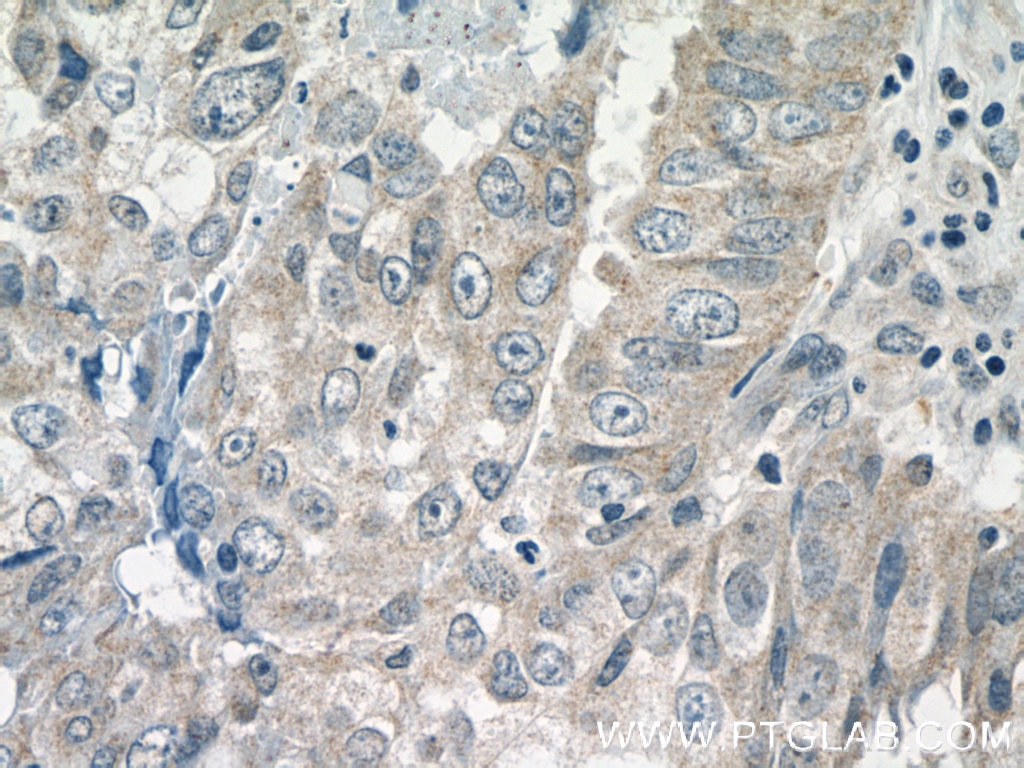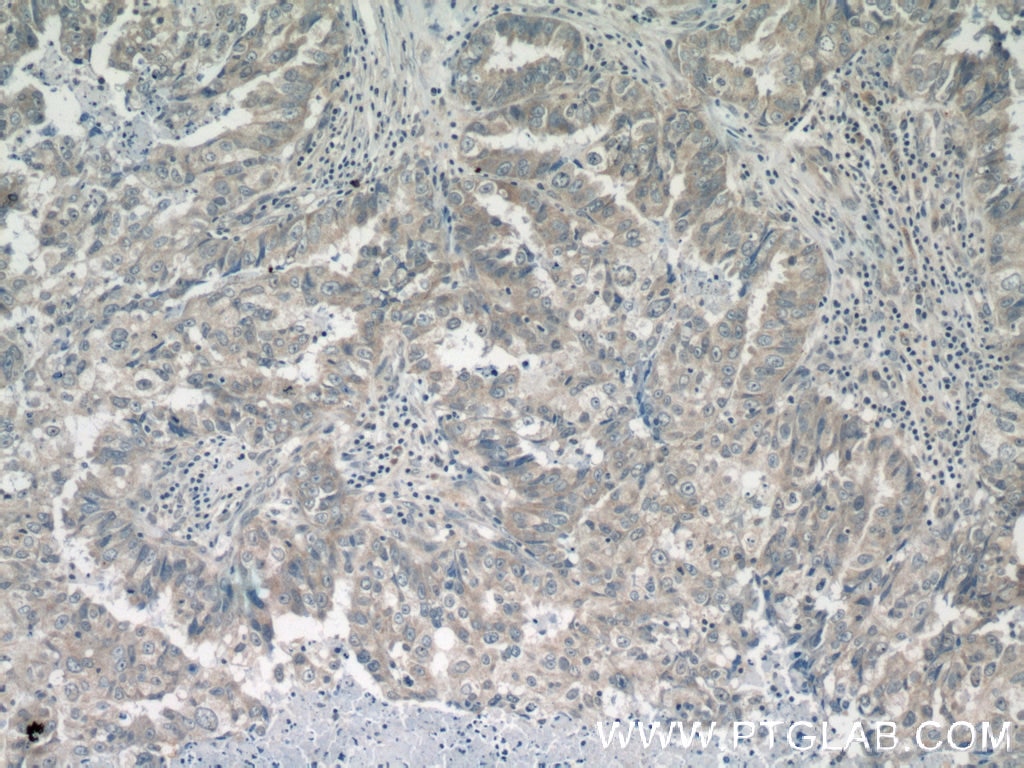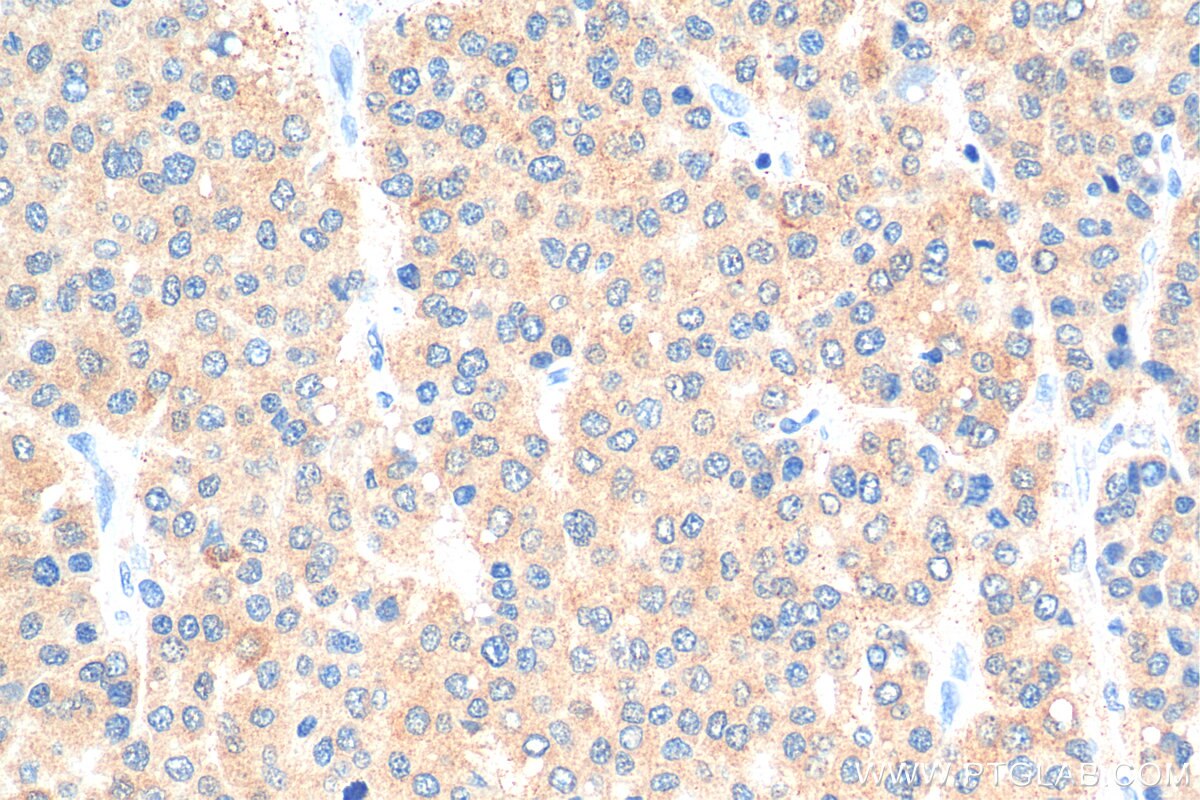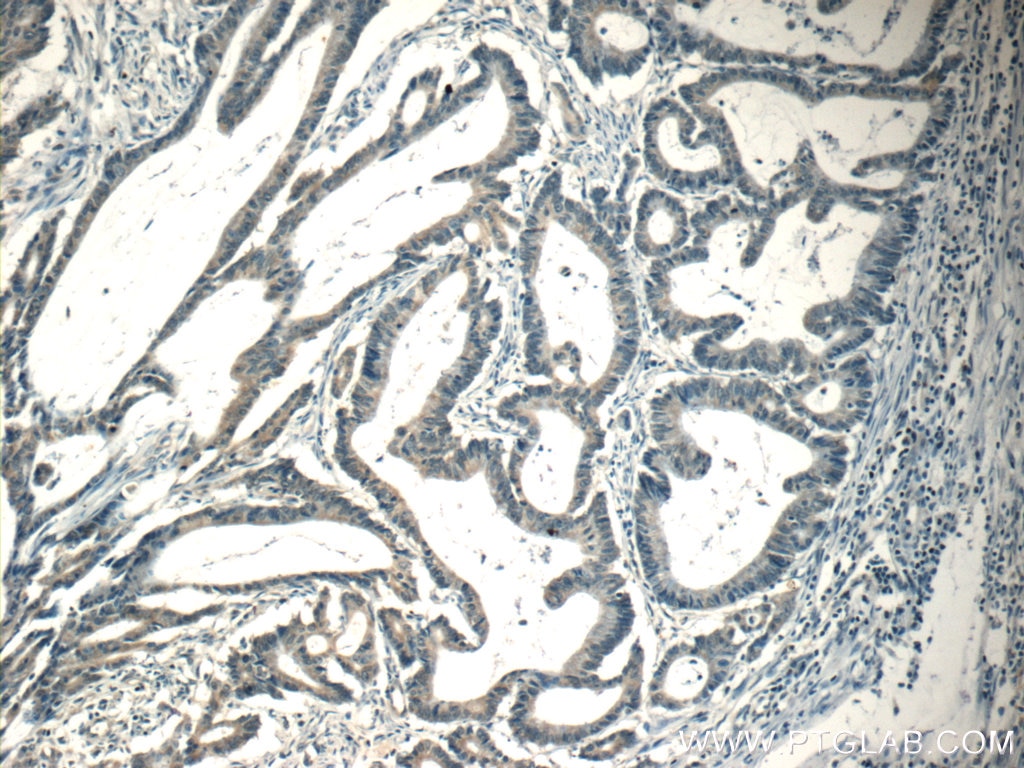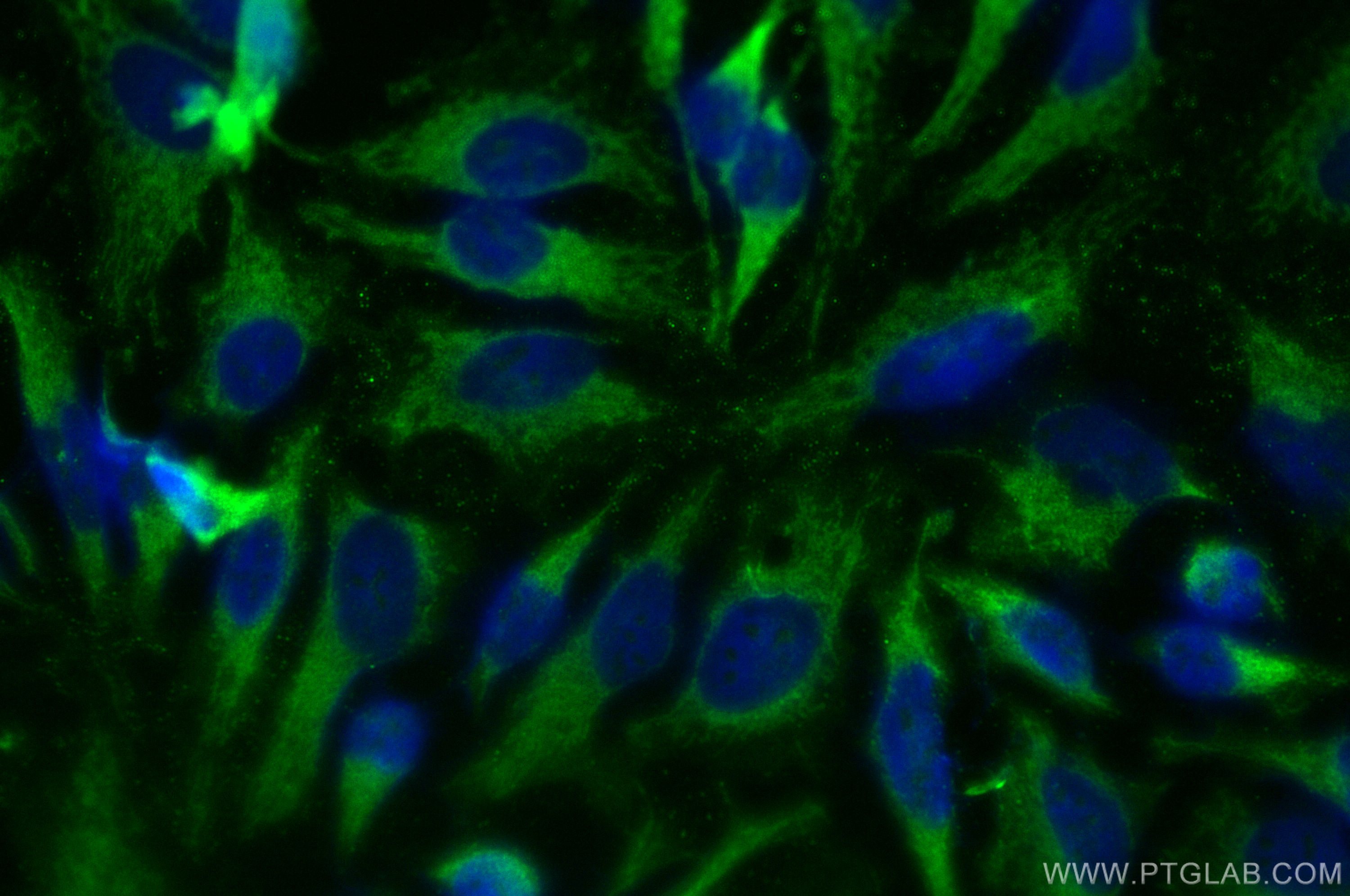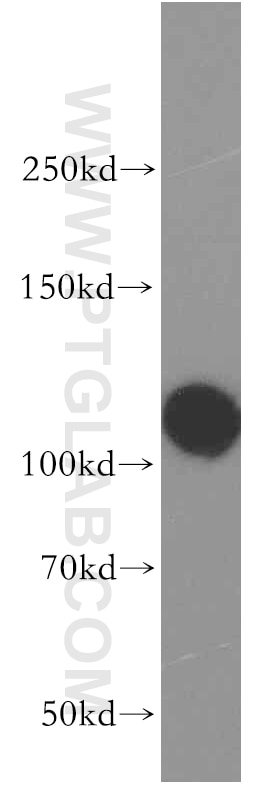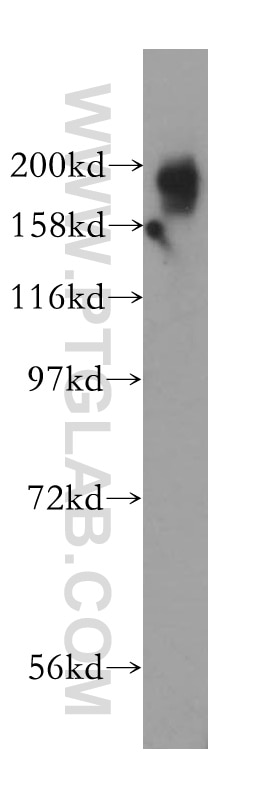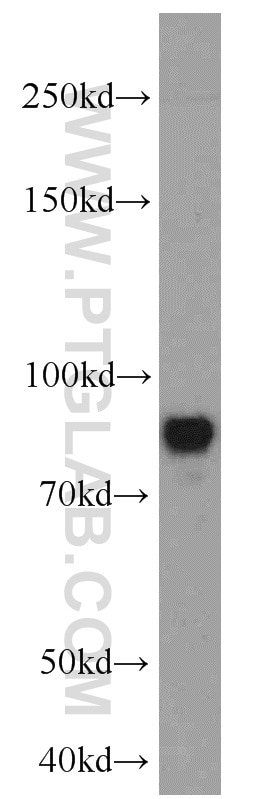- Phare
- Validé par KD/KO
Anticorps Polyclonal de lapin anti-CPEB1
CPEB1 Polyclonal Antibody for WB, IF, IHC, ELISA
Hôte / Isotype
Lapin / IgG
Réactivité testée
Humain, rat, souris
Applications
WB, IHC, IF/ICC, IP, RIP, ELISA
Conjugaison
Non conjugué
N° de cat : 13274-1-AP
Synonymes
Galerie de données de validation
Applications testées
| Résultats positifs en WB | cellules HEK-293T, cellules HeLa, cellules NIH/3T3 |
| Résultats positifs en IHC | tissu de cancer du foie humain, tissu de cancer du côlon humain, tissu de cancer du sein humain il est suggéré de démasquer l'antigène avec un tampon de TE buffer pH 9.0; (*) À défaut, 'le démasquage de l'antigène peut être 'effectué avec un tampon citrate pH 6,0. |
| Résultats positifs en IF/ICC | cellules HeLa, |
Dilution recommandée
| Application | Dilution |
|---|---|
| Western Blot (WB) | WB : 1:1000-1:4000 |
| Immunohistochimie (IHC) | IHC : 1:50-1:200 |
| Immunofluorescence (IF)/ICC | IF/ICC : 1:50-1:500 |
| It is recommended that this reagent should be titrated in each testing system to obtain optimal results. | |
| Sample-dependent, check data in validation data gallery | |
Applications publiées
| KD/KO | See 7 publications below |
| WB | See 13 publications below |
| IHC | See 2 publications below |
| IF | See 5 publications below |
| IP | See 2 publications below |
| RIP | See 1 publications below |
Informations sur le produit
13274-1-AP cible CPEB1 dans les applications de WB, IHC, IF/ICC, IP, RIP, ELISA et montre une réactivité avec des échantillons Humain, rat, souris
| Réactivité | Humain, rat, souris |
| Réactivité citée | rat, Humain, souris |
| Hôte / Isotype | Lapin / IgG |
| Clonalité | Polyclonal |
| Type | Anticorps |
| Immunogène | CPEB1 Protéine recombinante Ag3994 |
| Nom complet | cytoplasmic polyadenylation element binding protein 1 |
| Masse moléculaire calculée | 486 aa, 54 kDa |
| Poids moléculaire observé | 60-70kDa |
| Numéro d’acquisition GenBank | BC035348 |
| Symbole du gène | CPEB1 |
| Identification du gène (NCBI) | 64506 |
| Conjugaison | Non conjugué |
| Forme | Liquide |
| Méthode de purification | Purification par affinité contre l'antigène |
| Tampon de stockage | PBS avec azoture de sodium à 0,02 % et glycérol à 50 % pH 7,3 |
| Conditions de stockage | Stocker à -20°C. Stable pendant un an après l'expédition. L'aliquotage n'est pas nécessaire pour le stockage à -20oC Les 20ul contiennent 0,1% de BSA. |
Informations générales
CPEB1, also named as CEBP, CPEB and CPE-BP1, contains two RRM (RNA recognition motif) domains and belongs to the RRM CPEB family. It is a sequence-specific RNA-binding protein that regulates mRNA cytoplasmic polyadenylation and translation initiation during oocyte maturation, early development and at postsynapse sites of neurons. CPEB1 regulated translation is a key process involved in INS signaling. This is a rabbit polyclonal antibody raised against residues near the C terminus of human CPEB1.
Protocole
| Product Specific Protocols | |
|---|---|
| WB protocol for CPEB1 antibody 13274-1-AP | Download protocol |
| IHC protocol for CPEB1 antibody 13274-1-AP | Download protocol |
| IF protocol for CPEB1 antibody 13274-1-AP | Download protocol |
| Standard Protocols | |
|---|---|
| Click here to view our Standard Protocols |
Publications
| Species | Application | Title |
|---|---|---|
Nature CPEB1 coordinates alternative 3'-UTR formation with translational regulation.
| ||
Nat Cell Biol Ultrasensitive Ribo-seq reveals translational landscapes during mammalian oocyte-to-embryo transition and pre-implantation development. | ||
Gastroenterology Sequential Functions of CPEB1 and CPEB4 Regulate Pathologic Expression of Vascular Endothelial Growth Factor and Angiogenesis in Chronic Liver Disease.
| ||
Adv Sci (Weinh) Selective Translation of Maternal mRNA by eIF4E1B Controls Oocyte to Embryo Transition | ||
Nat Commun Translational reprogramming in tumour cells can generate oncoselectivity in viral therapies. |

